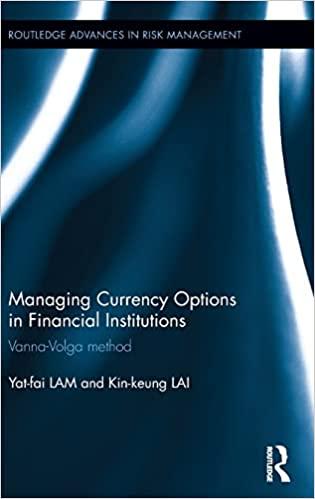Answered step by step
Verified Expert Solution
Question
1 Approved Answer
part A 6 part B eBook You must evaluate a proposal to buy a new milling machine. The purchase price of the milling machine, including
part A 6 

eBook You must evaluate a proposal to buy a new milling machine. The purchase price of the milling machine, including shipping and installation costs, is $156,000, and the equipment will be fully depreciated at the time of purchase. The machine would be sold after 3 years for $67,000. The machine would require an $8,500 increase in net operating working capital (increased Inventory less increased accounts payable). There would be no effect on revenues, but pretax tabor costs would decline by $31,000 per year. The marginal tax rate is 25%, and the WACC is 11%. Also, the firm spent $4,500 last year investigating the feasibility of using the machine. a. How should the $4,500 spent last year be handled? I. Last year's expenditure is considered a sunk cost and does not represent an incremental cash flow. Hence, it should not be included in the analysis. II. The cost of research is an incremental cash flow and should be included in the analysis. III. Only the tax effect of the research expenses should be included in the analysis. IV. Last year's expenditure should be treated as a terminal cash flow and dealt with at the end of the project's life. Hence, it should not be included in the initial investment outlay. V. Last year's expenditure is considered an opportunity cost and does not represent an incremental cash flow. Hence, it should not be included in the analysis. -Select- b. What is the initial investment outlay for the machine for capital budgeting purposes after the 100% bonus depreciation is considered, that is, what is the Year O project cash flow? Enter your answer as a positive value. Round your answer to the nearest dollar $ c. What are the project's annual cash flows during Years 1, 2, and 3? Do not round intermediate calculations. Round your answers to the nearest dollar Year 1: $ Year 2: $ Year 3: $ d. Should the machine be purchased? The Butler-Perkins Company (BPC) must decide between two mutually exclusive projects. Each project has an initial outflow of $6,500 and has an expected life of 3 years. Annual project cash flows begin 1 year after the initial investment and are subject to the following probability distributions: Project A Project B Probability Cash Flows Probability Cash Flows 0.2 $5,750 0.2 $ 0 0.6 6,500 0.6 6,500 0.2 7,250 0.2 19,000 BPC has decided to evaluate the riskier project at 11% and the less-risky project at 10% a. What is each project's expected annual cash flow? Round your answers to the nearest cent. Project A: Project B: $ Project B's standard deviation (s) is $6,185 and its coefficient of variation (CV) is 0.80. What are the values of (a) and (CVA)? Do not round intermediate calculations. Round your answer for standard deviation to the nearest cent and for coefficient of variation to two decimal places OM $ CVA b. Based on their risk adjusted NPVs, which project should BPC choose? N C. If you knew that Project B's cash flows were negatively correlated with the firm's other cash flow, whereas Project A's flows were positively correlated, how might this affect the decision? -Select- If Project B's cash flows were negatively correlated with gross domestic product (GDP), while A's flows were positively correlated, would that influence your risk assessment? -Select 
part B

Step by Step Solution
There are 3 Steps involved in it
Step: 1

Get Instant Access to Expert-Tailored Solutions
See step-by-step solutions with expert insights and AI powered tools for academic success
Step: 2

Step: 3

Ace Your Homework with AI
Get the answers you need in no time with our AI-driven, step-by-step assistance
Get Started


